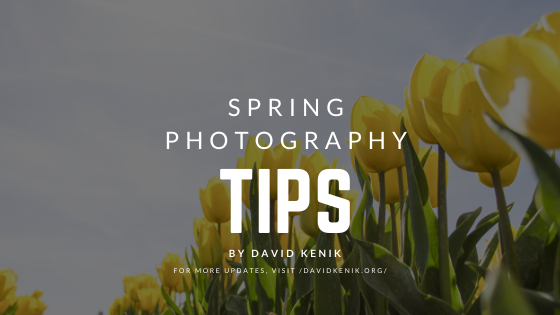- Protect Your Equipment
It’s no secret that camera gear comes with a pretty price tag. It’s also no secret that springtime weather is often a messy mix of mud, April showers, and pollen. Save money in the long run by investing upfront in accessories that will allow you to guard and extend the life of your valuable equipment. For those overcast days where you can’t resist getting in a portrait session but are also nervous about those pop-up showers, consider purchasing a rain cover. Keep your lens and everything in between dust-free with a blower and cleansing brush, and also be sure to keep the lens away from sunscreen and bug sprays.
- Bokeh and Blooms
Latch on your wide aperture portrait lens of choice and snag colorful pops of that creamy, coveted bokeh effect by placing your subject a foot or so from your favorite blooms. The wide aperture will keep your model in focus while blurring out the flowered background to vibrant bursts of springtime hues. This effect also looks excellent when directing your subject to move inward towards the blooms (like a patch of wildflowers or a cherry blossom branch), which keeps a few framing sprigs in focus at the foreground.
- Perfectly Polarized
The days have gotten longer, warmer, and often— brighter. Pack a polarizing filter for those days when you know you’ll be shooting in the harsh light of afternoon sun. These filters protect against overexposure and help to maintain the exact color and detail of a scene. They are especially useful for those who shoot analog photography.
- Always Underexpose!
No polarizing filter? No problem. While a polarizing filter is a useful (and cheap) accessory to have on hand, many cameras will allow you to manually adjust the aperture, shutter speed, ISO, and general exposure levels. It’s a general rule of thumb that one should always underexpose their photographs. Why? Details of a darker, more underexposed photo are still recorded to the camera. The features that exist in the shadows can be brought up and recovered, while overexposed lighting situations virtually “blind” your camera’s ability to recognize and record those details. If it’s a sunny day out (and especially if you happen to be at the beach, where sand reflects light back even brighter), it’s always good to do a few test shots and adjust your exposure balance accordingly.
